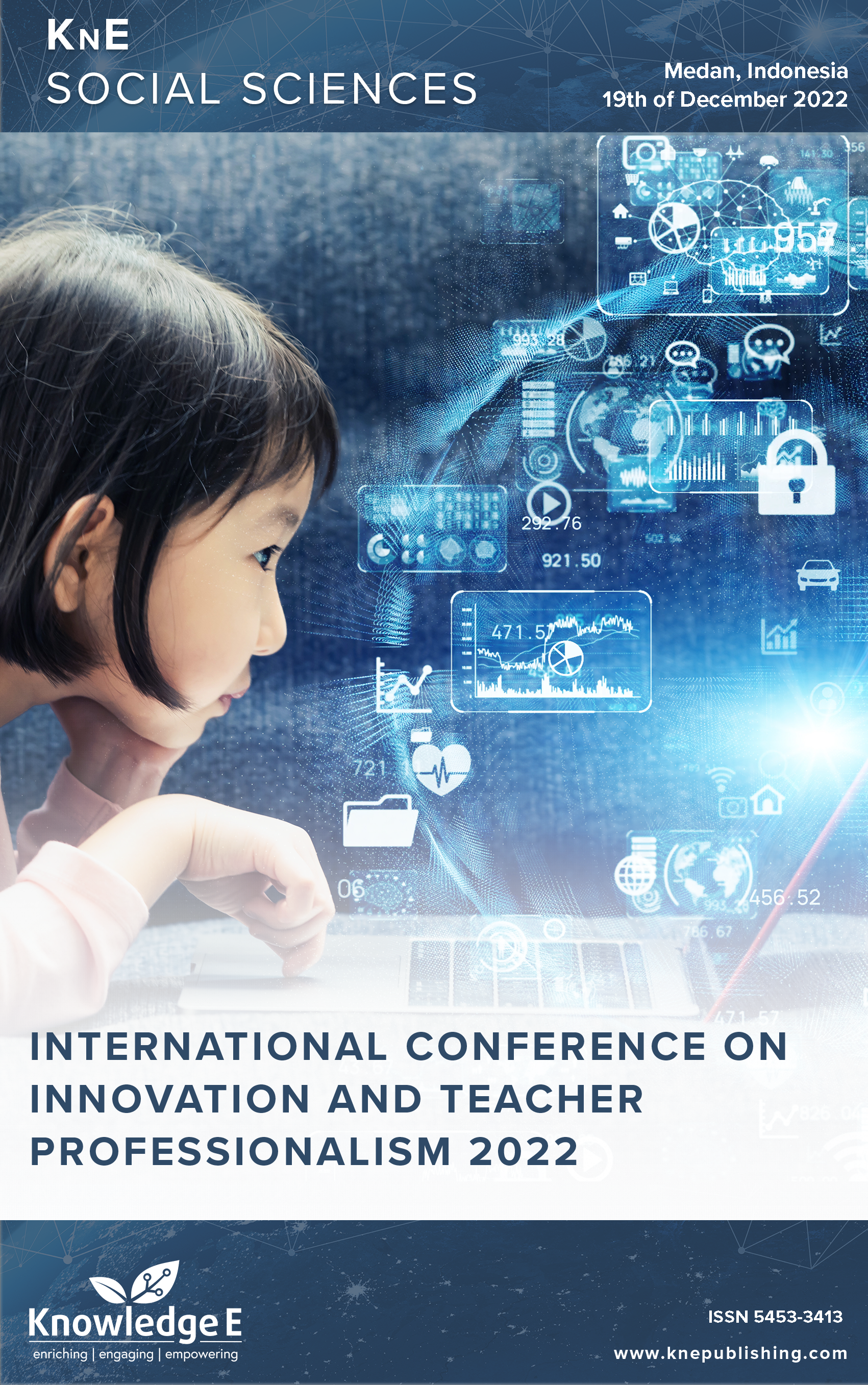Analysis of Problem-solving Ability of SDN Dinoyo 3 Malang Students in Inquiry Learning
DOI:
https://doi.org/10.18502/kss.v8i10.13444Abstract
This study aims to find out about the role of the scientific inquiry learning model in students’ problem-solving ability in science material for elementary school students. The method used in this research is descriptive qualitative research method. The place for this research is SDN Dinoyo 3 , Malang. The study was carried out on a total of 27e fourth grade students. Data were collected through observation, interviews, and documentation. The data analysis were done using data reduction, data presentation, and data verification. The results of this study indicated that the learning process that applies the scientific inquiry learning model is more efficient for problem-solving ability. Students in the scientific inquiry learning model will play an active role in the process of learning activities, where they are required to be able to solve the given problems. Based on the results of student tests and discussions, it can be concluded that the level of problem-solving ability of students of SDN Dinoyo 3 Malang needs to be improved. Factors that affect students’ problem-solving ability are, students’ lack of accuracy in doing questions, students rarely do questions that are oriented toward problem-solving ability, and lack of mastery of the concept of the topic of hydrology cycle from students. The implications of this study can provide information about the level of students’ problem-solving ability on the indicators displayed. This research is only limited to analysis to determine students’ problem-solving ability, so it is hoped that further research can be carried out which includes the development of learning instruments that can support students’ problem-solving ability.
Keywords: problem solving, inquiry, learning, hydrology cycle
References
[2] Aklima A, Abdul R. J Sci Educ Prof. 2022;7(2c):769–776. DOI: https://doi.org/10.29303/jipp.v7i2c.498
[3] Ahmadi F, Ibda H. Concepts and applications literacy new in the era of revolution industry 4.0 and society 5.0 books.google.com. 2019.
[4] Arifin S. The role of physical education teachers in education establishment _ character participant educate. Multilateral J. 2017;16(1):78–92.
[5] Fallon G. From digital literacy to digital competence: framework teacher digital competence (TDC). Developer Study Educational Technology. 2020;68:2449–2472. https://doi.org/10.1007/s11423-020-09767-4
[6] Faridah E. Teach education physical through game " creative ideas" optimizing aspect pedagogical." J Knowledge Sports. 2016;15(2):38–53.
[7] Ginanjar A, Suherman A, Juliantine T, Hidayat Y. Influence sport education phase using basketball against activity physique student in education physical. SPORTIF J: J Study Learn. 2020;6(2):332-347. https://doi.org/10.29407/js_unpgri. v6i2.14173.
[8] Hartanti MD, Nurhasan, Tuasikal ARS. Influence learning circuit based on approach scientific on learning outcomes dribble and shooting basketball. MULTILATERAL: J Phys Educ Sport. 2020;19(2):1–10. https://doi.org/10.20527/multilateral.v19i2.8614.g6741.
[9] Hasanah U. Learning strategy active early childhood. INSANIA J Think Alternative Educ. 2019;23(2):204-222. DOI:10.24090/ insania v 23i2.2291
[10] Koc Y. The effect of “physical education and sport culture” course on the attitudes of preservice classroom teachers towards physical education and sports. Int J High Educ. 2017;6(4):200. https://doi.org/10.5430/ijhe.v6n4p20 .
[11] Lesmana HS. The role of motor educability within increase skills sports in learning physical education. Archipelago Sports Page J. 2018;1(1):115–125. https://doi.org/10.31851/hon.v1i1.1507 .
[12] Mashuri H. Perception student to physical education teacher learning at Kediri Muhammadiyah High School. J Learn Sports. 2017;3(1):1–10. Retrieved from https://ojs.unpkediri.ac.id/index.php/pjk/article/view/681/505 .
[13] Nastiti FE, Abdu ARN. Study: Readiness Indonesian education is facing the era of society 5.0. Edcomtech. 2020;5(1):61-66. https://www.neliti.com/publications/334820/kajian-kesiapan- Pendidikan-indonesia-mefacing-era-society-50
[14] Nasution. Educational technology. Jakarta: Earth Script. 2011.
[15] Oviyanti F. Challenge teacher education development in the global era. Nadwa. 2016;7(2):267-282.
[16] Paturusi A. Physical education and sports management. Jakarta: Rineka Create; 2017.
[17] Prasetyo RI, Hidayat N, Dimas A. Literature study of POE learning model (Predict, Observe, and Explain. Proceedings Semdikjar National Seminar on Education and Learning, vol. 3. 2019. pp. 704-710.
[18] Pujiono A. Professionalism of christian religious education teachers in the era of society 5.0. Scenoo : Journal Theology and Religious Education. 2021. https://journal.sttia.ac.id/skenoo/article/view/15
[19] Ramley P. Implementation research in development of higher order thinking skills in science education. Surakarta: FKIP UNS; 2015.
[20] Sakti, Bayu P. Indicators understanding E-Portfolio in blended learning for facing the era of society 5.0. national seminar proceedings and virtual call for papers 2020 PGSD PGRI Yogyakarta University. 2021. https://www.researchgate.net/publication/348884050
[21] Stephani MR. Stimulation ability think critical through learning based on problems in physical education. J Phys Educ Sport. 2017;2(1):16–27. https://doi.org/10.17509/jpjo.v2i1.6397 .
[22] Sumarno S. Learning 21st century competencies facing the era of Society 5.0 Proceedings of SEMDIKJAR National Education and Learning Seminar; Vol. 3; 2019, pp. 272-287.
[23] Yulianto S, Roesdiyanto, Sugiharto. Analysis change curriculum in the physical education learning process sports and health in elementary school. J Educ: Theory, Res Dev. 2017;2(1):130-140. https://doi.org/10.17977/jp.v2i1.8477 .

